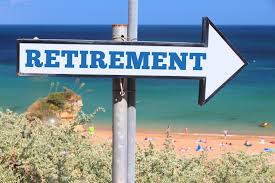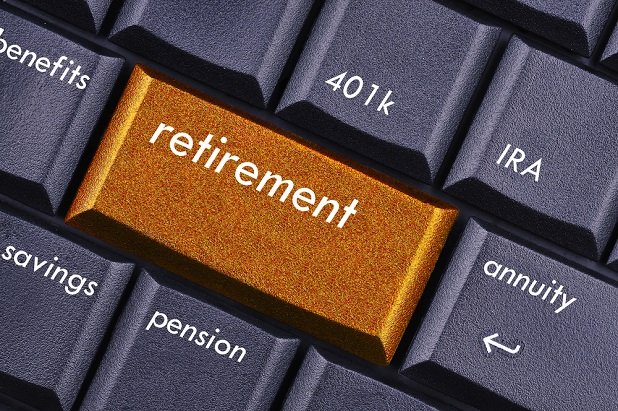How to Prepare Your Retirement Plan?(1)
How much money is enough for retirement?

How much money is enough for retirement? Of course, the more the better, which is what most people think. Now suppose that you needs $ 2 million for retirement, if it is 10 years later, it will need $ 2.7 million, and 20 years later, $ 3.6 million. To accumulate such a huge retirement fund, we can only start the retirement plan as soon as possible, trade time for space and achieve the goal through long-term accumulation. The love of saving and saving money for the future is a great virtue of the Chinese. Most Chinese people set maximum limits on 401K, 403B or personal retirement accounts for tax saving and retirement purposes. With regard to pension plans, too much money may not be a good thing, and it may not be a profitable thing. Many taxes have been saved today and higher taxes may have to be paid in the future. In addition to income tax, inheritance tax is also payable, this is one of them. Second, for the middle working class, more money is invested in pension plans, which means you can spend less money before retirement. And the period when the real big spenders are before retirement: buying a house, children's education funds, etc.
The main reason people put money into their retirement accounts in the past is that they pay less tax today. However, in the long run, some taxes are saved today and higher taxes will be paid upon retirement. If the husband and wife are both 35 years old and the tax rate is 31%, their 401K personal accounts already have $ 50,000 each, and each person also puts $ 10,000 into the 401K each year. Assuming an annual return of 10%, 30 years later, they can accumulate 4.5 million in 401K. At retirement, a prudent investment strategy is adopted: the annual interest income is 5%, or 220,000 per year. Income tax payable is higher than the current tax rate. In addition, these 4.5 million people still exist. After death, first of all, you have to pay 40% income tax, i.e. 1.8 million are removed and 2.7 million remain. According to the current inheritance tax allocation, no tax is required, but if a few years ago children only had one million inheritance taxes, the remaining 1.7 million would have to pay 55% of inheritance tax, or 935,000, which means These 4.5 million inheritances must pay 2,735 million in taxes, only 1,765 million are paid to children and the big head is dedicated to Uncle Sam.
Various options for retirement plans
Generally, there are 2 types of retirement plans: Qualified Plan and Non-qualified Plan. The first is tax deductible, and the second is not.
▼ Qualified Plan: mainly includes 401K / 403B, traditional IRA (individual retirement account), SEP IRA, etc.
▲ Non-qualified Plan includes Roth IRA, annuity and life insurance which can be used as retirement funds.
▼ The qualified plan may be tax deductible, but there is an upper investment limit. You cannot put more money without restrictions and you cannot discriminate. Qualified people put all the money in the same percentage.
▲ Non-qualified plans are not tax deductible, but many ineligible plans have no upper limit on how much money you can deposit (like an annuity).
Both the qualified plan and the unqualified plan have certain tax benefits, they can be tax-deferred, some can be tax deductible, and some don't have to pay tax (like Roth IRA). Of course, you can also invest in mutual funds, stocks or real estate as retirement funds, but these practices may not benefit from tax benefits. There is also Qualified Plan such as the Defined Benefit Plan, which can benefit from tax credits of up to 100,000 and 200,000. This type of plan looks very attractive, but it is not suitable for most people. The following is a detailed discussion of several commonly used pension plans.
A. 401K
Most large and medium businesses offer 401K plans for employees. The 401K plan is a plan for employees to contribute. Employees volunteer to invest up to 15% of their annual income, up to $ 19,500 (in 2020) in $ 401,000. The money invested in the 401K plan is tax deductible, and the part invested in the 401K can be deducted at the end of the year. Many employers will give you matches, usually the portion of your annual income of 6% gives you 50% of the match, which gives you 3% free money.
If your annual salary is 100,000 and you vote $ 15,000 in $ 401,000, your employer can give you a consideration of $ 3,000. Some industries (such as hospitals and schools) have a high match, some have a low match, and some companies have no match. For workers who receive W-2, the 401K is the most common type of pension plan.
First, you can deduct the tax and use the money before the tax to buy it;
Second, you can defer the tax until you remove it.
Third, many companies always give you matches. If you do not participate, you will not get a match.
Now there is the Roth 401K option, that is, you put the after-tax money into the 401K plan, so there is no first tax benefit, but his income is never taxable, and companies generally provide consideration. To sum up, the difference between 401K and Roth401K is that one is before tax and the other after tax; one is required to pay exit tax and the other is not taxed at exit. What is the best? It can vary from person to person. If at the beginning of your career you expect your future wages and taxes to exceed your present and your investment will grow there for many years, it is recommended to choose Roth 401K; if your current income is high, Then the tax deduction is more important for you, just put 401K.
The 403B retirement plan provided by hospitals and schools has a different name, but it is similar to 401K.








